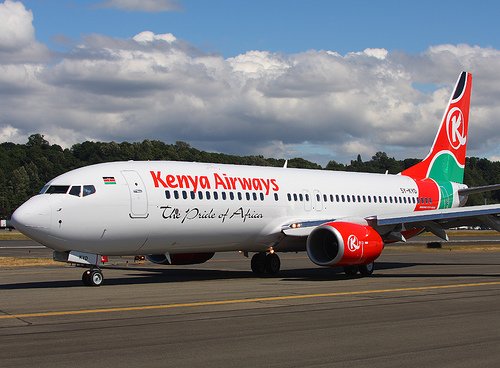
On July 8, the United States and the Republic of Kenya launched negotiations of a free trade agreement (FTA). Both countries have set out their objectives for the negotiations. The U.S. aims for government procurement mirror its objectives for the renegotiation of the North American Free Trade Agreement (NAFTA) and FTA negotiations with Britain and Japan. This post examines those objectives and suggests priorities and considerations for the procurement negotiations.
The Trump administration’s negotiating objectives, issued in May, include both offensive and defensive elements for government procurement. On the offensive side, the U.S. wants increased opportunities for U.S. firms to sell U.S. products and services to Kenya and to ensure reciprocity in market access opportunities. It also seeks to “establish fair, transparent, predictable, and non-discriminatory rules to govern government procurement in Kenya” and obligations and procedures to combat corruption in procurement.
The defensive objectives aim to continue protection of the myriad U.S. domestic purchasing preferences, which include set asides for small and minority businesses, Buy America requirements attached to federal funding for state and local projects, transportation services, and defense purchases covered by the Berry Amendment. It also wants to take state and local procurement off the table.
Kenya’s negotiating objectives, as reported by Inside U.S. Trade (July 14, 2020), begin with securing commitments to participate in U.S. government procurement. The U.S. imposes two hurdles to participation in its federal procurement. First, the Trade Agreements Act of 1979 (TAA), as amended, prohibits federal agencies from purchasing goods and services covered by the GPA from any country (other than a least developed country) that has not opened its procurement to the U.S. under the WTO Government Procurement Agreement or an FTA. The second is the Buy American Act of 1933, which establishes a preference for goods from the U.S. or GPA/FTA countries. The U.S. waives this requirement for goods covered under trade agreements.
A second Kenyan objective could pose a challenge for the negotiations. Kenya wants to apply “the principle of asymmetry geared towards non reciprocity in Government Procurement.” That conflicts with the U.S. aim of ensuring reciprocity, a condition set by the TAA for the U.S. to waive the Buy American Act. While the U.S. has not traditionally applied strict reciprocity in its procurement commitments, it has insisted on comparable coverage, such as application of the same thresholds, listing similar entities and opening all services, except those excluded.
The Trump administration tried to apply a different approach to reciprocity in the negotiations of the U.S.-Mexico-Canada Agreement (USMCA), the only agreement it has concluded with procurement commitments. it proposed to cap access to U.S. procurement at the dollar level of the procurement that Canada and Mexico opened under the agreement. Both NAFTA partners rejected the capping proposal, leading Canada to opt out of the procurement chapter all together and Mexico to roll-over its NAFTA procurement without any improvements.
The first priority of the Kenya procurement negotiations should be to reach an agreement on a robust set of principles and procedures to ensure that procurement covered by the FTA is conducted in a transparent, non-discriminatory, fair and predictable manner. The text should be based on the USMCA procurement text, which is closely aligned with the GPA, the template for procurement agreements.
A related priority would be to include requirements in the FTA that address the prevalence of corruption in Kenya, which the U.S. Trade Representative has repeatedly identified in its trade barrier reports. The USMCA provides a good starting point with its article on “Ensuring Integrity in Procurement Practices” that requires the parties to maintain criminal, civil or administrative measures to “address corruption, fraud, and other wrongful acts in its government procurement.”
Since Kenya is neither a party nor even an observer to the GPA and has not yet undertaken procurement commitments in a trade agreement, it may need extra time to bring its procurement system in line with the FTA. The U.S. could allow Kenya to delay implementation of specific provisions, which in other agreements have ranged from time periods for tendering to the domestic review mechanism.
The market access negotiations will need to address the Buy Kenya Build Kenya Strategy, adopted in 2017, with “the overall objective of increasing the competitiveness and consumption of locally produced goods and services,” according to the WTO Secretariat in Kenya’s 2019 trade policy review. Under that Strategy, Kenya applies preferences, set asides and local content requirements. They include a mandate that 30 percent of the public procurement budget be set aside for youth, women and the disabled. That particular requirement should not less problematic for the U.S. as it appears comparable to the 23 percent of federal contracts that must be set aside for small and minority businesses in the U.S.
To provide U.S. suppliers with access to Kenya's government procurement, the U.S. would likely insist on curbing at least elements of the Buy Kenya measures. In doing so, the U.S. could allow Kenya to apply transitional measures, such as higher temporary thresholds and phase-out domestic content requirements, as it has in other FTAs with developing countries. The procurement negotiators could also consider the extensive transitional and special measures permitted Vietnam and Malaysia in the negotiations of the Trans-Pacific Partnership.
Kenya’s adoption of a rules-based procurement system, with effective anti-corruption measures, should be the first priority. Without such a system, opening government procurement under the FTA may have little value. A second aim should be to develop market access measures that will facilitate Kenya’s market-opening while provide new opportunities for U.S. suppliers. Achieving a balance will be critical. As the administration intends a Kenya FTA to be a model for other countries in Africa. if it is too demanding in its coverage requirements or too stringent in transitional measures, it could make other African countries wary of entering similar negotiations with the U.S.
Jean Heilman Grier
July 29, 2020
Related Posts
Trade Implications of Buy American Act of 1933
Trade Agreements Act of 1979: Broad Authority, Narrow Application
Post Permalink: https://trade.djaghe.com/us-kenya-fta-negotiations-procurement/

